Tennis Elbow (lateral Epicondylitis) — Surgery treatment in the Best Hospitals of Germany
Treatment prices are regulated by national law of the corresponding countries, but can also include additional hospital coefficients. In order to receive the individual cost calculation, please send us the request and medical records.
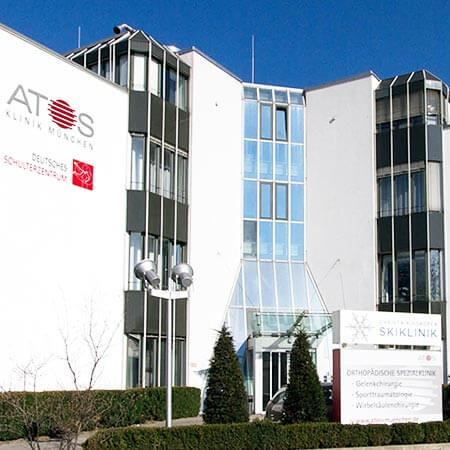
Department of Orthopedics, Foot Surgery, Hand Surgery and Spinal Surgery
According to the prestigious medical magazine Focus, the Department of Orthopedics, Foot Surgery, Hand Surgery and Spinal Surgery is one of the best medical facilities in Germany, specializing in shoulder and knee surgery, foot surgery, and hand surgery! The department offers a full range of medical services for diseases of the musculoskeletal system. The key focus of the department's doctors is the treatment of diseases of the large joints: knee, hip, shoulder, elbow, ankle, and wrist. Foot surgery specialists are responsible for the correction of hallux valgus, hallux rigidus, clubfoot, flatfoot, and claw toes, as well as the treatment of ankle arthrosis, heel spurs, and Achilles tendon ruptures. The department regularly admits patients with hand diseases, with particular interest in the treatment of wrist arthrosis, rhizarthrosis, carpal tunnel syndrome, and Dupuytren's contracture. The therapeutic offer is complemented by conservative and surgical treatment of spinal diseases such as herniated discs, spinal canal stenosis, vertebral fractures, and others. The department's medical team offers patients effective conservative treatment methods. However, when surgery is required, arthroscopic and minimally invasive techniques are preferred to ensure the fastest possible postoperative recovery and a high level of safety.
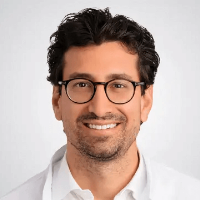
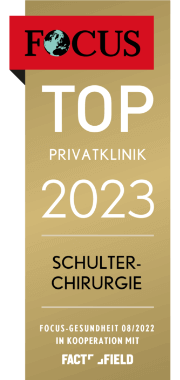
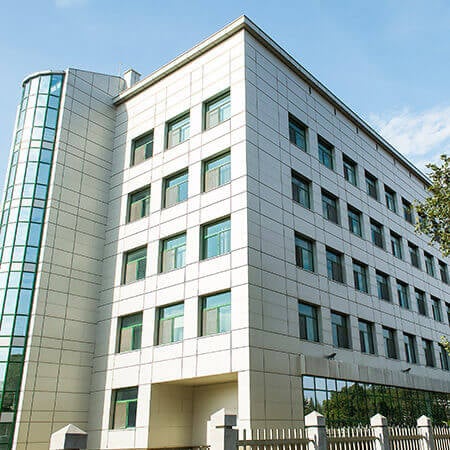
Department of Adult and Pediatric Orthopedics, Trauma Surgery, Foot Surgery, Hand Surgery and Rheumatology
The Department of Adult and Pediatric Orthopedics, Trauma Surgery, Foot Surgery, Hand Surgery and Rheumatology offers the full range of diagnostic and therapeutic services in its areas of specialization. The key areas of work of the department's doctors include large joint arthroplasty, arthroscopic interventions on the knee, hip, and shoulder joints, conservative and surgical treatment of foot and hand diseases and deformities, rheumatic joint lesions, orthopedic diseases in children, and musculoskeletal injuries. The key to successful clinical practice is the professionalism and unique experience of the department's medical team, combined with the advanced infrastructure and state-of-the-art equipment. The department has 5 operating rooms equipped with the latest technology. Most surgical interventions are performed using minimally invasive techniques, due to which, in the shortest possible time, the patient is verticalized, their mobility is restored, and a pronounced pain syndrome is excluded. The department annually performs more than 4,500 surgical interventions, including especially complex ones, so the specialists at the medical facility are rightfully proud of their impressive clinical experience in the surgical treatment of orthopedic diseases. Over the years, the department has gained an excellent reputation not only in Germany but also far beyond its borders.
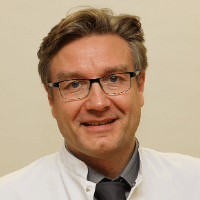

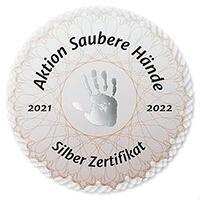
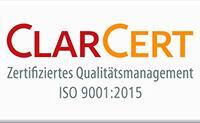
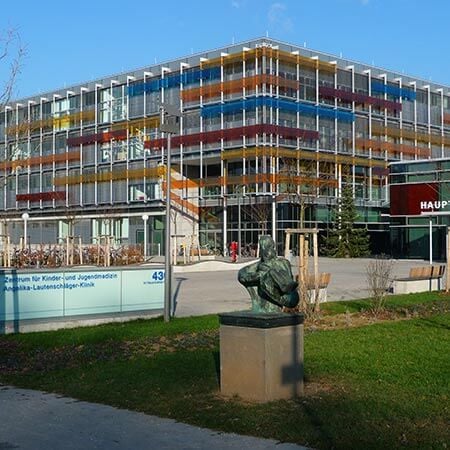
Department of Adult and Pediatric Orthopedics, Traumatology
According to Focus magazine, the University Hospital Heidelberg ranks among the top five hospitals in Germany! The hospital is one of the most advanced and reputable medical institutions not only in Germany, but throughout Europe. There are more than 43 specialized departments and 13 medical institutes, which cover all fields of modern medicine. A distinctive feature of the hospital is the presence of unique therapeutic methods for the treatment of complex and rare clinical cases.






Lateral epicondylitis (tennis elbow) is the most common cause of chronic elbow pain. This disease develops due to prolonged microtrauma of the site of attachment of the flexor tendons of the hand to the lateral epicondyle of the humerus. In Germany, you can get rid of chronic elbow pain once and for all in order to return to physical labor or sports. Doctors in this country perform not only classical open, but also minimally invasive arthroscopic interventions. They provide the best results with quick recovery of patients and low risk of complications.
Content
- What is epicondylitis, and how is it treated
- Principles of surgical treatment
- Open surgery
- Nerve surgery
- Tendon and bone surgery
- Percutaneous surgery
- Arthroscopic surgery
- Why is it worth undergoing surgical treatment in Germany
What is epicondylitis, and how is it treated
The elbow joint is located between the humerus on one side and the radius and ulna on the other side. The articular surface from the side of the shoulder has two condyles: lateral and medial. These are the protruding parts of the bone. The tendons of the muscles responsible for the movements of the hand are woven into them.
With lateral elbow epicondylitis, the side of the joint constantly hurts due to the inflammation of the place where the tendons attach to the bone. In 80% of cases, this is the lateral epicondyle; in 20% of cases, the medial one. The disease develops due to chronic microtrauma. Muscle traction acts on the tendon where it attaches to the bone, causing injury, inflammation, and degenerative changes over time.
The disease was first described at the end of the 19th century. It was called tennis elbow. The reason was that the pathology was first detected in people who play tennis. Any other racket sports also cause this condition. Moreover: 95% of cases of the disease are not associated with tennis or any other sport. Chronic elbow pain occurs due to physical labor.
Epicondylitis is usually treated with conservative methods. Doctors use restrictive bandages, painkillers, physical therapy, injections of glucocorticoids, anesthetics, and platelet-rich plasma. If there is no result, surgery is then performed.
Principles of surgical treatment
Surgical treatment of lateral epicondylitis is not considered the main option for dealing with this disease. The surgery is performed only in those cases when it is not possible to obtain a result from conservative therapy for six months or more.
There are about one and a half dozen options for elbow surgery performed for the treatment of lateral epicondylitis. These include:
- simple release (alleviation);
- reconstruction of the common extensor tendon;
- separation of the deep fascia covering the common extensor tendon;
- arthroscopic release.
All surgical interventions for the treatment of lateral epicondylitis are divided into:
- open;
- percutaneous;
- arthroscopic.
Any treatment aims to remove pathologically altered tissues, weaken the tendon due to partial removal (release), and reduce muscle traction. Sometimes bone decortication can be performed as well. The doctor removes the top layer of the lateral epicondyle. Not all doctors agree with this approach. So far, there is no convincing evidence that additional bone decortication improves treatment outcomes compared with tendon release alone. However, this element of the surgical intervention causes additional trauma to the patient and intensifies pain in the early postoperative period. The range of motion in the elbow decreases, making early rehabilitation more complex.
Successful surgery ensures long-term outcomes. Patients get rid of chronic elbow pain and can return to physical labor or sports training. Up to 75% of all treated patients consider themselves completely healthy, the rest may have some symptoms, but they are significantly relieved after the surgical intervention. Comprehensive rehabilitation after surgery ensures total restoration of elbow function and the possibility of a quick return to normal life.
Open surgery
Under visual guidance, open surgical interventions are performed through an incision a few centimeters long. The doctor performs:
- resection of the epicondyle;
- resection of the circular ligament and synovial membrane;
- release of the short radial extensor of the wrist and the common extensor of the fingers;
- elongation of the distal tendon;
- denervation (nerve crossing);
- decompression (elimination of compression) of the radial nerve.
Open surgery for the treatment of tennis elbow has been performed since the first half of the 20th century. However, they may not always provide good long-term outcomes. Since the tissues in the elbow area are significantly damaged, scars and adhesions form on this site. They can be a focus of pain in the future.
The surgical interventions are performed on:
- connective tissue structures;
- nerves.
Nerve surgery
The interventions on connective tissue structures are the most widespread, while nerve denervation and decompression give only short-term improvement. However, some hospitals perform nerve surgery. The most common surgery options are:
- posterior interosseous nerve neurolysis;
- Epicondyle denervation by crossing the branches of the posterior cutaneous nerve of the forearm at the level of the elbow joint.
The main advantage of these surgical procedures is a short rehabilitation with good short-term results. After 5-7 days, the patient can return to normal life. Nerve surgery is suitable for those who do not plan to engage in physical labor or sports after treatment. Upon return to work, the risk of epicondylitis recurrence reaches 30% within six months.
Tendon and bone surgery
The Hohmann procedure, which the author described back in 1926, has become widespread in the West. At the German Congress of Orthopedic and Trauma Surgery in Cologne, a German orthopedic surgeon presented the results of the treatment of four patients with chronic lateral epicondylitis who did not benefit from conservative therapy. In 1930, the author presented the results of 12 more operations, 11 of which were successful. This surgical intervention is still performed today, although in a modified version. It is performed through an incision 3 cm long. The doctor makes notches on the tendons near the bone. The joint is not opened, and the vessels and nerves are not damaged.
The Nirschl technique proposed in 1977 is used as well. It is most often performed in the modification of Morrey (2002) and the modifications of other authors. Doctors perform tendon release and debridement (polishing) of their attachment site. The modified version also involves osteoperforation (creating a hole) of the lateral epicondyle. In this case, stem cells enter the elbow joint, blood supply improves, and tissue healing accelerates.
After open surgery for tendon transection, about 60% of patients experience pain relief within six weeks, about 76% of patients – within one year, and about 91% of treated patients – within five years. However, open surgical interventions may cause other symptoms in addition to pain, such as loss of sensation in the elbow or joint stiffness. Approximately 1 in 3 patients who undergo open elbow surgery still have pain or other symptoms five years after completing treatment. About 80-85% of patients can return to sports and physical labor.
Percutaneous surgery
Percutaneous (minimally invasive open) techniques have been used since the 20th century. Percutaneous tendon release was first described in 1982. The percutaneous intervention was performed in 1995 on an outpatient basis (without hospitalization). The procedure was performed under local anesthesia.
As of today, the techniques are being improved. In 90% of cases, percutaneous techniques allow for achieving good and excellent results.
The percutaneous treatment method involves the performance of manipulations blindly or under the guidance of medical imaging techniques. Large incisions are not made, and the endoscope is not inserted into the elbow joint, so the doctor cannot see the surgical field directly. However, these surgical interventions are safe with sufficient surgeon experience and qualifications. They provide good outcomes with a minimal trauma rate. Most often, the surgeon excises pathologically altered tissues in the area of the extensor tendon during the percutaneous intervention. In addition, the doctor may make a hole in the bone tissue of the lateral epicondyle to allow stem cells to release from the humerus and improve tissue regeneration.
Arthroscopic surgery
Arthroscopic surgical interventions have become widespread in the 21st century. This is a sparing technique for the surgical treatment of tennis elbow. It is performed using an arthroscope with a diameter of 2.4-3 mm, through skin punctures. The technique provides the possibility of quick and safe resection of the tendon of the base of the extensor carpi radialis brevis in 100% of cases and the base of the common extensor of the fingers – in 90% of cases.
Anatomical studies have helped surgeons identify key anatomical marks and detect the area of insertion of the tendon of the extensor carpi radialis brevis. This ensured the safety of the arthroscopic technique.
The advantages of the technique are as follows:
- the possibility of removing excess tendon tissue without dividing the aponeurosis of the common extensor;
- the doctor can see the joint cavity;
- it is possible to detect and eliminate concomitant intra-articular pathology;
- the minimum period of postoperative rehabilitation.
Basically, the intervention is performed on the extensors of the hand. Doctors perform arthroscopic resection of the histologically altered tissue of the extensor carpi radialis brevis in combination with decortication of the affected lateral epicondyle of the humerus. Less commonly, debridement (surgical treatment) of the lateral joint capsule with surrounding tissues is performed.
Arthroscopic surgery provides good long-term outcomes. According to C.L. Baker, about 87% of those who underwent surgery were still satisfied with the results of the operation 11 years after it was performed. Other studies have shown that surgical intervention results do not depend on the person's age, the duration of the disease, or the presence of concomitant pathology of the operated joint. However, symptoms return more often in people who continue to engage in physical labor or sports.
The percentage of successful operations varies in different hospitals. The risk of unsuccessful arthroscopic treatment is 5 to 11%. Arthroscopy is more effective than open surgery in some data, while other studies show similar results. In any case, arthroscopy is at least as effective as open surgery. This procedure is more sparing: some patients return to work within 2-4 weeks after its performance. Unlike open surgery, elbow instability never develops after arthroscopy.
Why is it worth undergoing surgical treatment in Germany
To permanently get rid of elbow pain and return to work or sports, you can undergo elbow lateral epicondylitis treatment in Germany. This country has the necessary equipment to perform new types of operations. The hospitals in this country employ experienced surgeons who have honed their skills for years.
There are a few reasons for you to undergo treatment in Germany:
- high-precision diagnostics allows the doctors to find out the cause of elbow pain to choose the best treatment option for the patient;
- the use of innovative operations, many of which are developed by German specialists;
- minimally invasive interventions are performed through skin punctures a few millimeters long;
- preference is given to more sparing interventions without damaging the bone tissue;
- doctors perform surgical interventions that are aimed at the total cure of the disease, but not a short-term pain relief;
- after surgery in Germany, you will be able to return to your everyday life in 2-4 weeks without elbow pain;
- reliable results: the risk of recurrence will be minimal even if you return to physical labor or sports.
To undergo treatment for epicondylitis (tennis elbow) in Germany, please use the Booking Health service. On our website, you have the opportunity to get up-to-date and accurate information about the cost of treatment in Germany, compare prices in different German hospitals and book a medical care program at a favorable price. The treatment will be easier and faster for you, and the cost of treatment in Germany will be lower.
You are welcome to leave your request on the Booking Health website. Our employee will contact you, consult, and answer all questions. We will take care of the organization of your trip abroad. We will provide the following benefits for you:
- We will select the best German hospital whose doctors specialize in the treatment of lateral epicondylitis and achieve the best results.
- We will help you overcome the language barrier and establish communication with the doctor in the German hospital.
- We will reduce the waiting period for treatment, and you will receive medical care on the most suitable dates.
- We will reduce the price. The cost of treatment in Germany will be lower than usual due to the lack of overpricing and coefficients for foreign patients.
- Our specialists will solve any organizational issues: paperwork, transfer from the airport to the German hospital and back, hotel booking, and interpreting services.
- We will prepare your documents and translate them into English or German. You do not have to undergo previously performed diagnostic procedures.
- We will keep in contact with the German hospital after the completion of treatment.
- We will organize additional diagnostics and treatment, if necessary.
- We will buy medicines in another country and forward them to your native country.
While the best specialists in the world take care of your health, the Booking Health staff will help reduce the cost of treatment in Germany and take care of all your travel arrangements.
Authors:
The article was edited by medical experts, board certified doctors Dr. Vadim Zhiliuk and Dr. Sergey Pashchenko. For the treatment of the conditions referred to in the article, you must consult a doctor; the information in the article is not intended for self-medication!
Sources:

